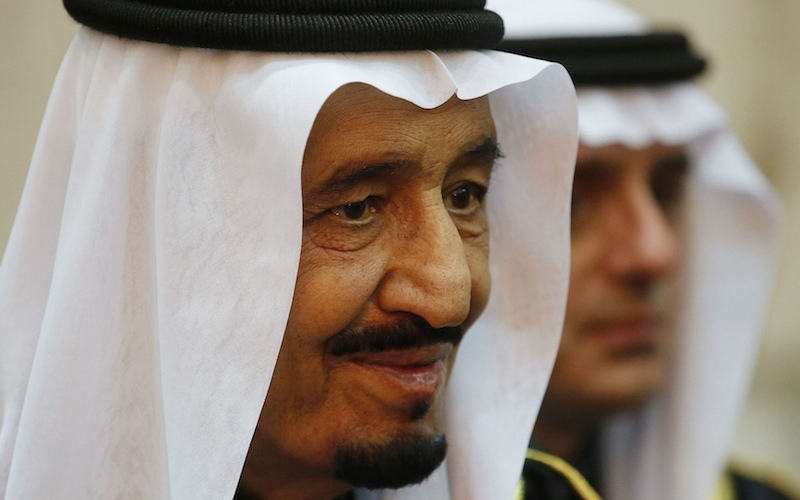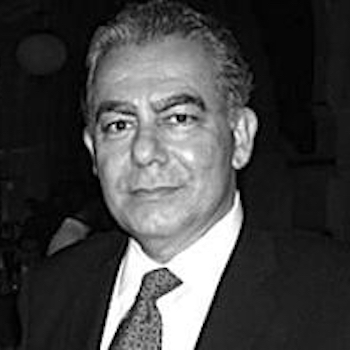
Two Years after Abdullah: Impending Showdown over Saudi Reforms?
Even in a country known for the molasses-like pace of its social and political reforms, many in Saudi Arabia remember the late King Abdullah as more of a progressive than his brother and successor Salman.
Two years after Abdullah’s death in January 2015, the new government continues to deal with the same issues he faced, although the stakes are now exponentially higher. Saudi Arabia’s new leadership has spent a considerable amount of time, money, and consulting fees to lay out its strategy for moving beyond challenges that stymied King Abdullah, including long-overdue diversification and balancing strictly orthodox religious traditions with the demands of a young, globally-connected populace. Whether or not he truly deserves it, Abdullah enjoys a reputation for forward thinking on the most difficult issues (such as women’s rights) the new regime has yet to match.
It was never going to be easy for Salman to address these challenges, as Saudi’s deep structural and socioeconomic issues have now been baked in for decades. Abdullah laid the groundwork for a better-educated, higher-skilled workforce with his educational initiatives and building programs, namely massive development projects like the King Abdullah Economic City north of Mecca and Jeddah.
His moves to increase female participation in public life received widespread coverage, although Saudi women themselves came away disappointed with the lack of real change. Many of the key questions following the former ruler’s death in 2015 surrounded whether this approach would continue. The answer came quickly: with sustained low oil prices almost derailing the viability of the country, the new king (and his ambitious son) have taken a much more aggressive approach.
The power behind Salman’s throne, 31-year-old Deputy Crown Prince Mohammed bin Salman, made a splash in Western media outlets this time last year by announcing his plans to revamp the economy and lower Saudi oil dependence. In April, the deputy crown prince officially unveiled “Vision 2030,” a wide-ranging plan that includes regulatory, budget, and policy changes to help diversify the economy, attract foreign investment, and prepare for a post-carbon future. The plan provides for selling part of the government’s stake in oil giant Saudi Aramco and creating a sovereign wealth fund to invest in non-oil assets. To prepare for its implementation, the regime has pushed ahead with slashing various subsidies, promoting efficiency and accountability in the bureaucracy, and investing in training and educational programs for both women and men.
All of these blueprints emphasize the involvement of the private sector and foreign investors in the economic revamp. Mohammed bin Salman’s Vision 2030 strategy aims to lift the private sector’s GDP contribution from 40% to 60% by 2030. This is a major philosophical departure for the Gulf state, which moved decisively toward its current state-run oil economy in the 1970s as the wave of resource nationalism was sweeping through the region. This full-blown reversal creates significant opportunities for foreign companies looking for untapped markets.
It also gives Saudi Arabia’s new rulers an avenue to repair some of their most important relationships, especially with western partners. The end of Abdullah’s reign saw ties between Riyadh and Barack Obama’s White House grow cold, but Salman and his son have singled out the US and the UK as key players in their economic plans. While the future of Saudi-US relations under the Trump administration remains up in the air, the British proffered an enthusiastic response during Theresa May’s visit to the region last month. The UK is already Saudi Arabia’s second-largest cumulative investor, with its approximately 200 joint ventures inside the kingdom worth more than £17.5 billion and British exports to Saudi Arabia exceeding £5.5 billion in 2015. British but also Chinese and Japanese capital is keen on the Saudi market: despite its current troubles, Saudi Arabia is still the largest economy in the MENA region, and a successful reform program could double GDP by 2030.
The economic prospects are cause for optimism amidst the current budget crunch, but social policies under Salman have lurched towards the traditional. Feeling Abdullah sacrificed too much of his conservative base, the government has taken several steps to mend that divide, including cracking down on liberal bloggers and sacking two officials who were known for their opposition to Saudi conservatives. Even so, it will be impossible to enact meaningful economic change without some social openings, and the men leading Saudi Arabia know it.
Last month, Mohammed bin Salman offered a clue that his father’s reign could soon break with Abdullah’s precedent in one key way: instead of tiptoeing around hardline resistance to change, he and his father are now gearing up to challenge it directly. Bin Salman reportedly laid out a three-pronged strategy to avoid a backlash from religious conservatives who oppose his reform plan. The strategy involves reasoning and engaging with reticent elements of the clergy to win them over to inevitable changes, including female employment but also the growth of sports and entertainment industries. It also, however, involves punitive measures for those who refuse to accept the new order. In a country where the political leadership has depended on religious legitimacy since the 18th century, taking on the Wahhabi establishment head-on is a radical break from tradition.
The deputy crown prince’s comments raise the question: will he succeed where others have failed, convincing or sidelining religious conservatives enough to enact the groundbreaking reforms his country needs? The young prince and his father may yet face a tougher fight than Abdullah, but they also seem more willing to throw the power of the state behind their public’s demands for change.

